Muji’s latest home designed for narrow urban spaces
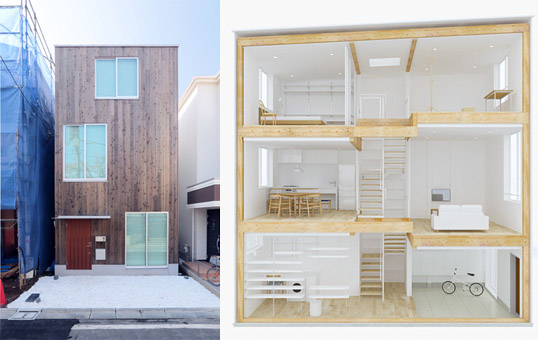
Muji House announced their latest offering - a 3-storey house designed for small blocks of land in urban areas.
The target occupants are young couples and families who want the convenience of living in an urban area.Read more
Pirate-themed house in Yamanashi
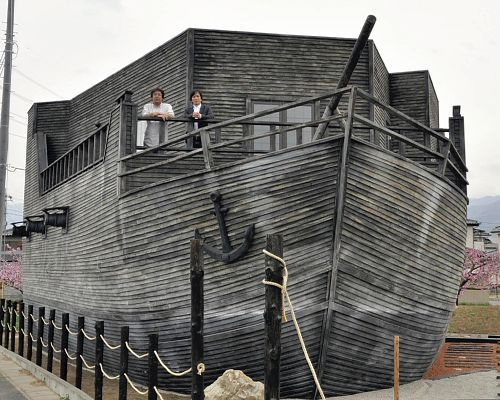
Canadian Home Yamanashi has recently completed a 3-bedroom home built to resemble a pirate ship. The home-owner, Masaru Watanabe, wanted a house that would resemble the Black Pearl from Pirates of the Caribbean. Mr. Watanabe said at first he had difficulty finding a builder who could create such an unusual home.Read more
Tokyo's newest and tallest wood-frame mansion
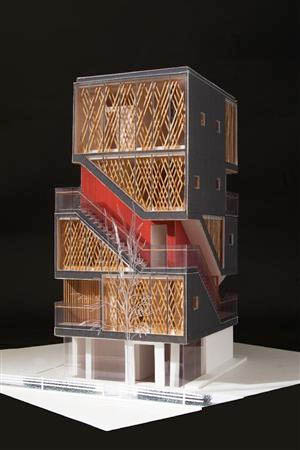 Tokyo's first 5-storey wooden structure - an apartment building - is to be built near Shimouma in Setagaya-ku.
Tokyo's first 5-storey wooden structure - an apartment building - is to be built near Shimouma in Setagaya-ku.
Under a revision to the Building Standards Act in 2000, wooden structures over 4 stories are permissible as long as they meet building strength and fire resistant regulations. Prior to this amendment, a law made during the Taisho period (1926 - 1926) limited wooden structures to 3 stories.
Although the amendment was made 12 years ago, it has not been widely taken up by the construction industry. In Tokyo city, just one 4-storey wooden residence was built in Chiyoda-ku in 2011.Read more
Muji Model House opened in Saitama
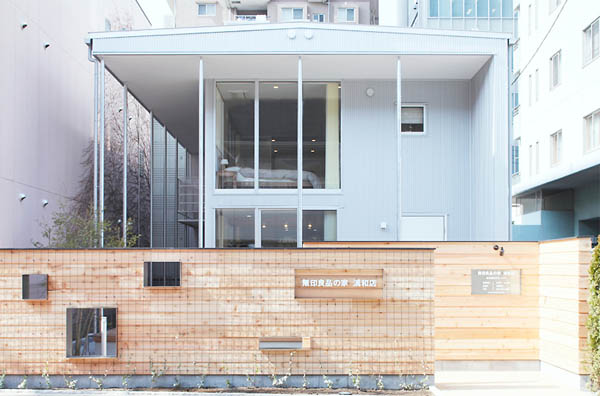
Japanese household and consumer retail giant, MUJI, has designed a model house in conjunction with home-builder Okawa. The display home was opened on April 1 in Urawa-ku, Saitama City.
The house was designed to be long-lasting and flexible, so that it can be easily changed to adapt to changes in family structure and lifestyle. By 2015, both companies are expecting to be able to supply 500 MUJI-style homes annually.Read more
The polyhedron house
Also known as the "Reflection of Mineral" house.
The home-owners' brief for this unique home in Nakano-ku, Tokyo, was a simple, yet functional design that maximized the total living space.Read more
Building Regulations in Japan
The following is a brief guide to some of the building regulations you will encounter when building a house in Japan.
Yosekiritsu
This is the building volume-to-land ratio and defines the maximum total floorspace allowed on a block of land. The ratio is expressed as a percentage, eg. 200%. In built-up areas in central Tokyo the Yosekiritsu is high, whereas in suburban and rural areas, the Yosekiritsu will be much smaller. The highest ratio in Tokyo is 1300% which applies to commercial land in the Yurakucho / Marunouchi area around Tokyo Station. Even still, there are buildings that exceed this ratio because they have borrowed air rights from neighboring blocks. Read more
Compact Living in Tokyo
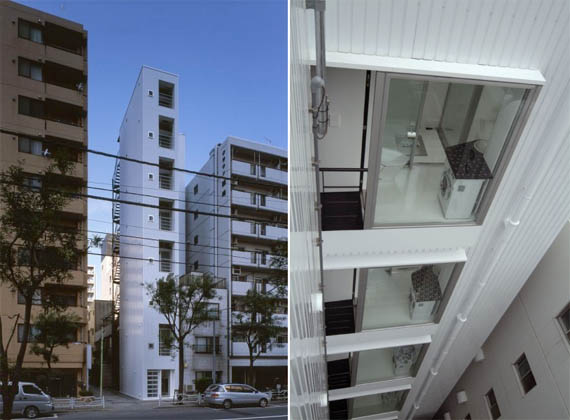
With typically high rents, tiny, cramped apartments are plentiful in Tokyo and there is no shortage of tenants looking for smaller, affordable accommodation. There is a boom in 'one-room', or studio apartments, as more and more young people move closer to Tokyo for work. Limited space has led to some creative designs, and this apartment building in Tsukiji called "CT7165" is no exception.Read more

